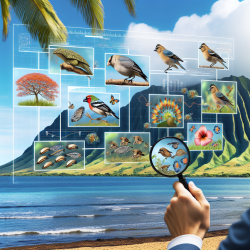Introduction
As a Special Education Director, you are tasked with ensuring that your team is equipped with the most effective strategies and insights to support diverse learners. One innovative approach is to draw inspiration from the natural world, particularly from the research on species diversification in isolated ecosystems like the Hawaiian Islands. The research article "Island time and the interplay between ecology and evolution in species diversification" by Rosemary G. Gillespie offers valuable insights that can be applied to enhance educational practices.
Understanding the Research
The study focuses on the Hawaiian archipelago, highlighting how ecological and evolutionary processes interact over time to foster species diversification. Key findings include the roles of selection, genetic drift, and variability in shaping biodiversity. These insights are achieved by integrating ecological metrics and genomic tools, offering a comprehensive view of how species adapt and thrive in isolated environments.
Applying Ecological Insights to Education
As educators, we can draw parallels between the ecological dynamics of the Hawaiian Islands and the learning environments we create for students. Here are some ways to implement these insights:
- Diversification and Adaptation: Just as species adapt to their environments, students benefit from adaptive learning strategies that cater to their unique needs and strengths. Encourage teachers to employ diverse instructional methods and materials to foster an inclusive learning environment.
- Selection and Variation: Recognize the importance of varied teaching approaches to address different learning styles. Encourage educators to experiment with different pedagogical techniques and assess their effectiveness, much like how natural selection favors advantageous traits.
- Community Dynamics: Foster a collaborative learning community where students can engage in peer learning and support. This mirrors the interaction networks in ecological systems that enhance community stability and resilience.
Encouraging Further Research
The research underscores the importance of integrating new tools and approaches to understand complex systems. Encourage your team to stay informed about the latest educational research and technologies. Consider organizing professional development sessions that explore innovative teaching methods inspired by ecological and evolutionary principles.
Conclusion
By embracing the lessons from the natural world, educators can create dynamic and adaptive learning environments that cater to the diverse needs of students. The research on the Hawaiian Islands serves as a reminder of the power of adaptation and collaboration in fostering growth and success.
To read the original research paper, please follow this link: Island time and the interplay between ecology and evolution in species diversification.










